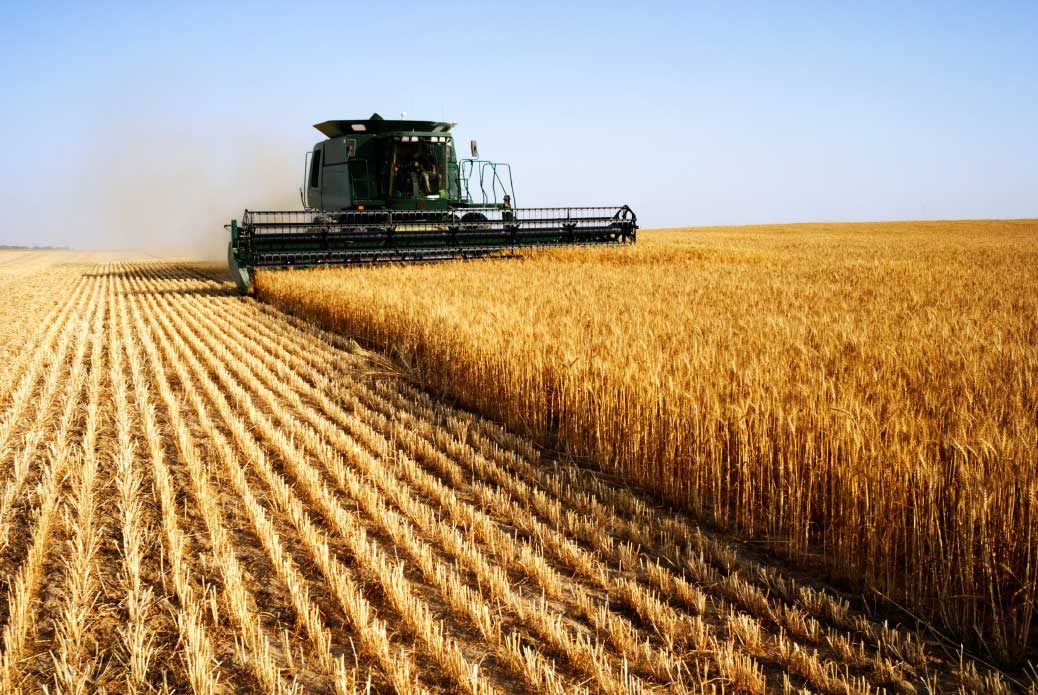The agriculture sector, as one of the major pillars of Iran’s economy, has played an undeniable role in Iran’s economic growth since President Hassan Rouhani took office in August 2013. Annual agricultural production, which stood at 97 million tons when Rouhani became president, rose to 117 million tons in the last Iranian year (ended March 20, 2017), IRNA reported.
When Rouhani took office, Iran’s annual agricultural trade was experiencing an $8.1-billion deficit, but after a year the deficit narrowed down to reach $5.5 billion, marking a $2.6-billion decrease.
As exports grew and imports fell in the past two Iranian years: 1394 (March 2015-16) and 1395 (March 2016-17), the deficit reached $3.4 billion. During the 10 months to January 20, the largest share of exports in this sector belonged to poultry with 1,300 tons worth $1.1 billion having been exported, making up about 25% of all agricultural exports. The sector grew 3.5%, 4.1% and 5% during Q1, Q2 and Q3 of last year, indicating a promising future.
Self-Sufficiency in Wheat Production
Last year, Iran managed to become self-sufficient in wheat. A record high of over 14 million tons of wheat were produced last year, more than 11.5 million tons of which, worth over $4 billion, were purchased by the Government Trading Corporation–a state-owned company specializing in the purchase, import and distribution of essential foodstuff from local farmers at guaranteed prices.
The volume of wheat purchases stood at 4.8 million tons the year Rouhani took office.
Every year, the government buys certain strategic crops, including wheat, from local farmers at guaranteed prices to build up its strategic reserves and control prices in the domestic market.
According to Food and Agriculture Organization, Iran, besides Kazakhstan, is the 11th biggest wheat producer in the world.
Dairy Exports
Iran exported 750,000 tons of dairy products to 30 countries, including the US during the 11 months to February 19. Currently, nine Iranian dairy companies are able to export to Russia.
“Until two years ago, our country couldn’t export dairy products to Russia, but now it’s possible thanks to the obtainment of relevant permits,” says Iranian Agriculture Minister Mahmoud Hojjati.
Praised by FAO
Director General of the UN Food and Agriculture Organization Jose Graziano da Silva has praised Iran’s efforts aimed at maintaining food security at times of crisis.
Referring to close ties between Iran and FAO, he said FAO plans to establish a center in Iran, particularly in the areas of irrigation and fishery with the aim of providing training for local farmers.
According to Deputy Agriculture Minister Abbas Keshavarz, food security in Iran has improved by 23% since Rouhani came to office.
Food security indicators and measures are derived from country-level household income and expenditure surveys to estimate per capita caloric availability. In general, the objective of these indexes is to capture some or all of the main components of food security in terms of food availability, access and utilization or adequacy. While availability (production and supply) and utilization/adequacy (nutritional status/anthropometric measures) seem much easier to estimate, more access (ability to acquire sufficient quantity and quality) remains largely elusive.
“With regard to wheat production, the rate of food security will reach 77% this year (March 2016-17),” Keshavarz was quoted as saying in September 2016.
According to Central Bank of Iran’s latest report, economic growth during the nine months to Dec. 21, 2016, stood at 11.9% including oil production and 1.9% excluding it. The agriculture sector had a 4.2% growth during the period.
The Statistical Center of Iran says GDP growth for the nine-month period stood at 7.2% including oil production and 5% excluding it, putting the expansion in the agriculture sector at 5.7%.
“Had it not been for the growth in the agriculture sector, our country would have faced negative growth,” President Rouhani has been quoted as saying.
The agriculture sector now accounts for 12-13% of Iran’s gross domestic product, up from 9% to 10% when President Rouhani first took office.
The sector has created 19-20% of all jobs in the country.


